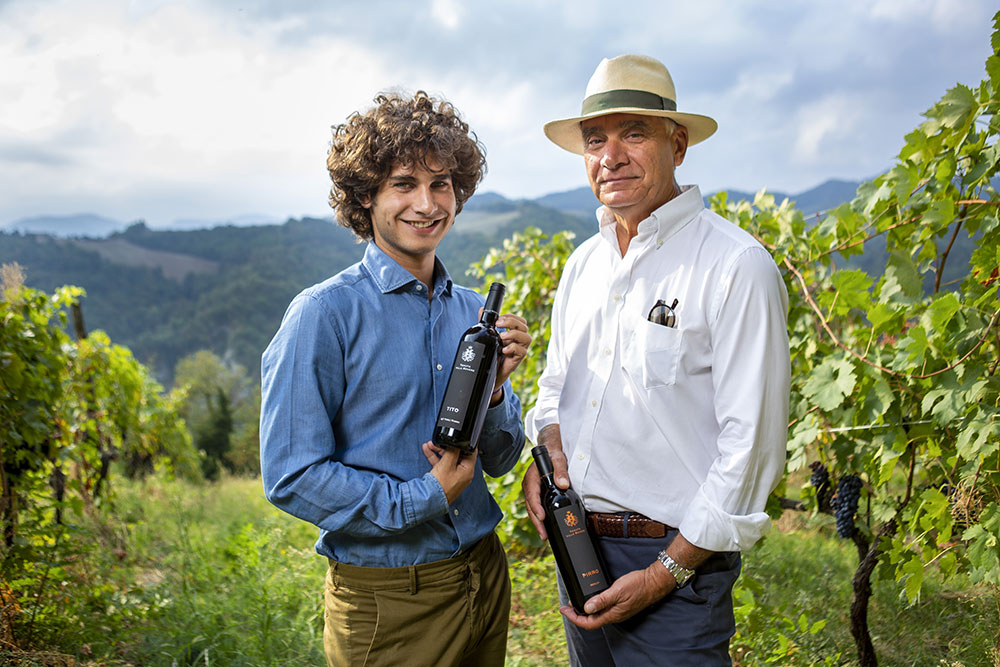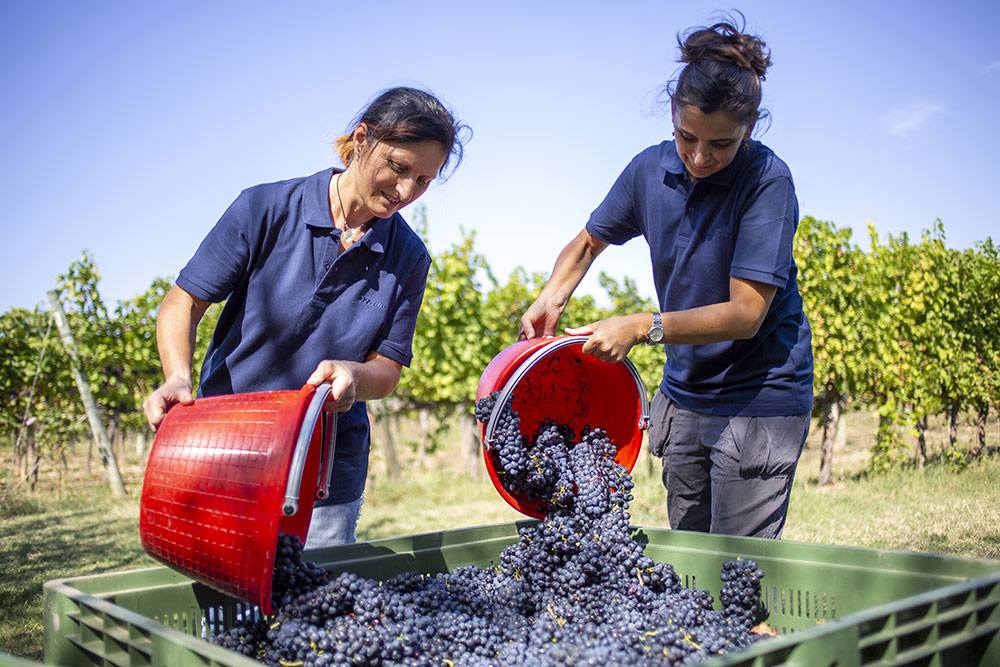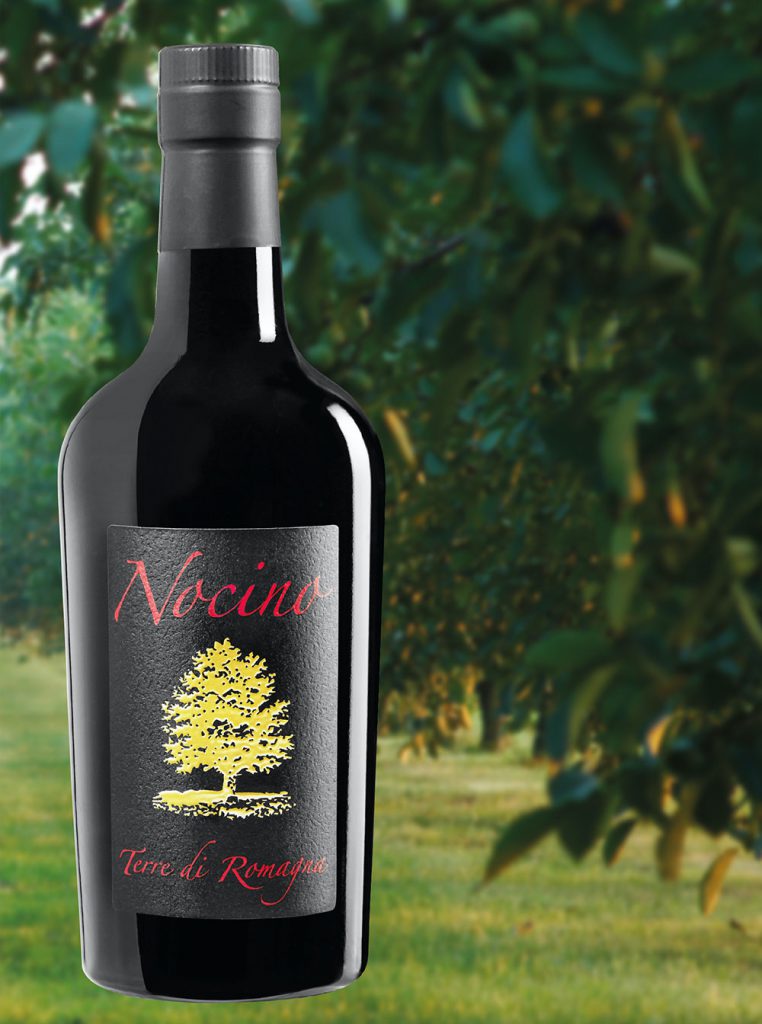History
The history of the Giulianini family dates back to the early 1500s when Giovani Battista Giulianini from Milan, a knight of arms, was positioned as the head of Eliopolis (now Terra del Sole), an impregnable fortress on the border of the Papal State and founded by Cosimo dei Medici. The Eliopolis was an example of architectural and military perfection from the Italian Renaissance. In the 1700s, a part of the Giulianini family retired to Dogana ( literally Border ) which lay just beyond the border between the Grand Duchy of Tuscany and the Papal State, following a dispute that split the family in two; one side was faithful to the Grand Duchy of Tuscany and the other, whose story we tell today, sided with the Papal State.

The family were already long- time landowners in Romagna by the mid 1700s and it was then that there began a small production of Rovere wines. The starred sommelier Gianfranco Bolognese writes about these in his book “From Osteria to the Restaurant – from 700 to the new millennium”. At the inaugural banquet of the monument in memory of G.B. Morgagni in Forlì ( ancient Forum Livii ) on May 27 1875, delicacies which were declaimed in French were sampled and were accompanied by excellent champagne and wine from Rovere, the village where the Giulianini settled after their escape from the Grand Duchy. In subsequent generations, the attorney Tito Giulianini, grandfather of Alessandro Annibali Giulianini, produced wines on both the Rovere and the Signolo di Predappio estates where the Giulianni had vineyards ideal for making excellent wines. At the beginning of the 2000s, his grandson Alessandro decided to take up the ancient art of his ancestors and started producing wines with international blends but with a strong link to the territory where they are produced.
THE VINEYARD
The Tenuta Villa Rovere wine project was born in more recent years. It was inspired by those grounds where Alessandro spent the hot summers of his childhood with his cousins. The 6 Ha vineyard tells the tales of that childhood, using international grapes to produce distinct, savoury, fresh and light wines which display particular characteristics of the territory. The first 3 hectares of this new vineyard, occasionally situated in Via delle Vigne ( Vineyard road ) , were planted in 2004 with red berried grapes such as Cabernet, Sauvignon, Merlot and Shiraz. In 2006, a further 3 hectares were planted with Sauvignon Blanc. The vineyard lies in a natural Clos between the Montone river and the Mulini canal on loamy soils, rich in sands, gravel and silicon.

The decision to work with international vines was challenging however the climatic characteristics of the area and the spirit of innovation of traditions overcame these difficulties. These modern vineyards, which has been partly grown with Cordone Speronato system ( Spurred Cordon ) for the reds and with Guyot for the white grapes, has a density of 5.000 vines per hectare, perfectly orientated North/South and sits on a slight slope with great drainage capacity. A pond is situated in the center which not only provides water in the driest years but maintains the marked biodiversity of the land. The climate is sub-continental with a fair amount of rainfall, fairly high thermal summations and a slight breeze which arrives from the Adriatic Sea situated only 30km north- east of the vineyard.
THE CELLAR
For the past 10 years, the wines of the Estate have been produced by external cellars. In more recent years and together with his son Tito, a young agricultural entrepreneur who loves wine and the Tenuta Villa Rovere project, have decided to build their own cellar. It was clear that, in order to have maximum control of the delicate transformation process of these hand-picked grapes, after one year of great care in the vineyard, it was necessary to be able to count on one’s own cellar to experiment, test and taste those fine wines produced on the Tenuta Villa Rovere. Thanks to the contribution of fine consultants the cellar project took shape and the first phase of fermentation took place with steel tanks at a controlled temperature where wines are initially fermented before refining in wood in a temperature controlled ambience. In small 228 lt barriques is aged part of the Sauvignon Blanc Nanì and Giulì, the 100% Shiraz, 500 litres Tonneaus are used to refine Pirro, 100% Merlot and large 2000 litres barrels for the refinement of Tito, a base Cabernet Sauvignon bland with small part of Merlot and Shiraz which need 2 years of ageing in the barrels and 1 year in the bottle in order to soften the strong tannins of the Cabernet and enhance the aromas of the Merlot and Shiraz. All Tenuta Villa Rovere wines bear the name of a past family member such as Tito, grandfather but also son of Alessandro, Olindo who was Tito’s father and Alessandro’s great-grandfather, Pirro who was Olindo’s uncle, Nani and Giuli which are the names of the two Giulianini sisters, Alessandro’s mother and aunt. This tribute to the family’s history gives character and authenticity to the project.
THE WINES
- Tito
- Pirro
- Giulì
- Olindo
- Nanì
- Il Nocino
THE NOCINO
Limpid, dark brown, delicate and sweet with a persuasive honeyed finish are characteristics of our Nocino Terre di Romagna. It is produced using our high quality Romagna Walnuts of the Chandler variety. The realization of Nocino Terre di Romagna takes places using an ancient peasant tradition which is characterized by a mixture of history and legends. Historical sources find traces of Nocino in ancient Roman documents. They speak of a “dark walnut liqueur” which was drunk on midsummer nights. Folk tales have also helped to created a legendary aura around the stages of the preparation of the liquor itself.

The walnuts, which are used to produce the Nocino Terra di Romagna, are harvested when the shell is not yet formed and it is possible to pierce the husk with a needle. On the night of San Giovanni, which is between the 23rd and 24th of June and is traditionally named “the night of the witches”, the walnuts are harvested and then cut and infused in alcohol where they remain to macerate for around a year. After this procedure, the liquid product is then separated from the solid and is mixed with sugar and aromatic herbs such as Cloves, Cinnamon and Coriander. After a further year, the Nocino is filtered and bottled and then refined in that same bottle for at least 12 months before being placed on the market. The Nocino di Romagna was born from the desire to create a typical product of the territory. It is produced from high quality walnuts which come from the San Martino Agricultural Company within the Walnuts of Romagna project. This project was founded 18 years ago by our San Martino and New Factor companies and today it has more than 200 hectares of planted and productive land. The well-known inventor of Italian cuisine Pellegrino Artusi from Forlimpopoli was the first to create this precious infusion and describes it is a high quality product which expresses the tradition of the land of the Romagna region.

Interviste esclusive dal mondo del vino ed approfondimenti da chi fa del vino una ragione di vita, di business e di cultura.









